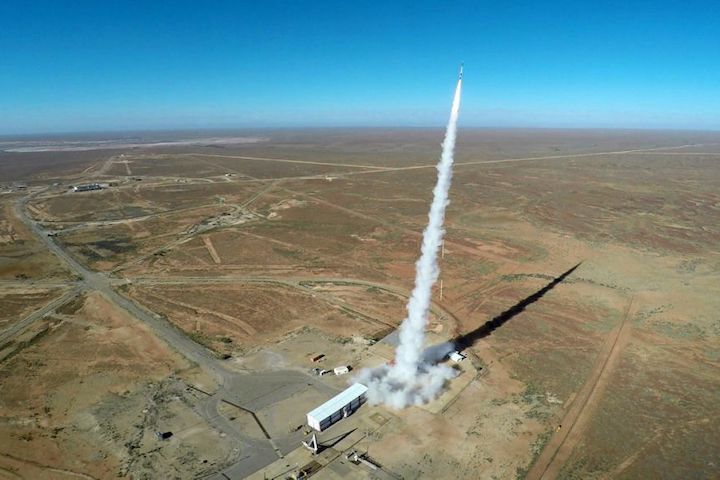14.11.2020
Armed conflict in space is unlikely to look like it does in The Mandalorian.
But with the United States creating its Space Force and India testing anti-satellite weapons, a real-life space battle is more possible than ever.
An international project is trying to establish what the rules of engagement of that battle would be.
That project is called the Woomera Manual.
What is the Woomera Manual?
It's a document that clearly lays out what international law says is — and isn't — allowed when it comes to military action in space.
It's not a new law, nor is it a proposal for new laws.

"We are not lawmakers, we are not authorised or able to create international law," Melissa de Zwart, Dean of Law at University of Adelaide and one of the directors of the project, tells RN's Future Tense.
It's not a new idea. There are similar manuals such as the Tallinn Manual (which covers cyber operations), the Harvard Manual (on air and missile warfare) and the San Remo Manual (which relates to conflict at sea).
These manuals tend to be laid out in dot points, and are designed to be as clear and unambiguous as possible.
"The point of these manuals is to give clarity about the application of the law," Professor de Zwart says.
The idea is that if there's a rulebook that countries agree on, then conflict becomes less likely — much like having an agreed set of sporting rules makes it less likely for a fight to break out onfield.
"This will contribute, we hope, to international peace and security by giving a common understanding of what the applicable law is," Professor de Zwart says.
Why is it needed?
The main reason, Professor de Zwart says, is that space law is complicated.
There are five different United Nations treaties on outer space, and then there are various declarations and legal principles to be taken into consideration.

We're already testing the limits of space law. For example, international space treaties don't explicitly cover privately-owned rockets and satellites.
"It was only contemplated by the original treaties that it would be nation-states who would have the money [and] the capacity to launch something into outer space," Professor de Zwart says.
Also, the physics of space means some actions can have far-reaching consequences.
For example, India's anti-satellite weapon test was condemned by NASA because, they said, debris from the explosion put residents of the International Space Station at risk.

Professor de Zwart says the Woomera Manual is "designed for use by non-lawyers". For example, it could be used in military training, or to guide government decisions in the heat of the moment.
Who is involved?
A lot of people. There are team members from the UK, the US, Canada, Australia, Europe and China, and Woomera Manual meetings have been held around the world.

"By its very nature it has to be international," Professor de Zwart says.
"We have tried unsuccessfully to get someone from Russia but we've been open to that."
Those involved work in academia, in government and in the military, although they are acting in a personal capacity rather than as official representatives.
Some are lawyers, while others are experts in a relevant technical field.
There are also people involved from non-government organisations such as the Red Cross and the Union of Concerned Scientists.
Read more: What is 'space power' and how do you measure it? This article explains.
Is this the only space war manual?
No. There's another very similar manual being developed in Canada called MILAMOS, which is short for Manual on International Law Applicable to Military Uses of Outer Space.
While this could lead to confusion, the Secure World Foundation's Christopher Johnson says he expects the two manuals will be used together.
He expects MILAMOS will be used to understand the rules for peacetime and times of rising tension, with the Woomera Manual stepping in when there's armed conflict.
"They are going to sit on a shelf side-by-side so they can be referred to by practitioners, by interested parties, by states and militaries to have some kind of guidance and commentary as to what the law actually says," Mr Johnson says.
When can I read the final version?
It's expected the final draft of the Woomera Manual will be ready by next year.
Then comes the process of state engagement, where the manual is "road-tested". It'll be presented to representatives of various countries, to see if it reflects those nations' understanding of the rules.
This process will be hosted by the Dutch government at The Hague, home to the International Court of Justice.
"That gives us the greatest exposure that we can to a range of different national government representatives," Professor de Zwart says.
Quelle: ABC News
